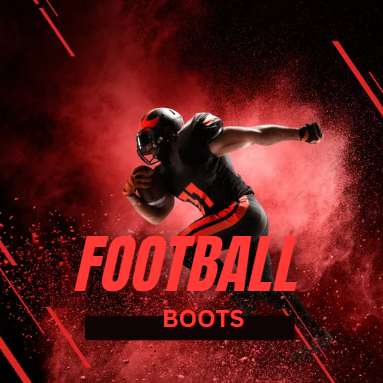The Evolution of Football Boots
Football boots have come a long way from their rudimentary beginnings to the advanced, technologically sophisticated designs we see today. They are not just footwear but are crucial for enhancing performance on the pitch. Whether designed for comfort, control, or speed, have significantly impacted the way the game is played. Let’s delve into the history, types, and technological advancements that have shaped modern.
A origins History of Football Boots
The origins of football boots can be traced back to the mid-19th century when as a formalized sport started to take shape. In 1891, the Association (FA) in England allowed players to wear with small studs or cleats to improve grip. These early boots were heavy, made of thick leather, and designed primarily for protection rather than agility or speed. They extended above the ankle to provide added support, especially in rough playing conditions.
Read Also : Esty Uk
Modern Football Boots Design
Today, football boots are highly specialized and designed with a range of player preferences and playing surfaces in mind. Modern boots are usually made from lightweight synthetic materials and offer advanced features tailored to different aspects of the game.
Firm Ground (FG) Boots
Firm Ground are the most popular and versatile type of football boots. They are designed for use on natural grass pitches and have molded plastic or rubber studs that provide excellent grip and stability. The studs are strategically placed to distribute pressure evenly across the foot, enhancing comfort and reducing the risk of injury. FG boots are typically lightweight and are designed for players who prioritize speed, agility, and ball control.
Soft Ground (SG) Boots
Soft Ground boots are made for wet, muddy pitches, where extra traction is essential. These boots have fewer, but longer, metal studs that penetrate deeper into the soft ground, providing a more secure footing. SG boots are ideal for players in regions with a lot of rain or during winter seasons when pitches are likely to be soggy and slippery.
Artificial Ground Football boots
With the rise of artificial pitches, AG boots have become increasingly popular. These boots have shorter, more numerous studs that are designed to perform optimally on synthetic surfaces. The studs are designed to reduce strain on the joints, making them a great option for players who often play on artificial turf.
Indoor (IC) and Turf Boots
For players who play on indoor courts or artificial turf, specific types of boots are designed with flat soles or small rubber studs. Indoor (IC) provide a low-profile grip suited to the fast-paced nature of indoor . Football boots Turf (TF), on the other hand, have small, dense rubber studs designed for shorter, less intense artificial turf surfaces. These boots offer good traction and comfort, reducing the risk of injury during quick movements.
Technology in Football Boots
As the game has become faster and more dynamic, football boot manufacturers have incorporated new technologies to enhance player performance.
Enhanced Ball Control
Many modern have textured surfaces or special coatings to improve ball grip and control. like Football boots the Nike Mercurial and Adidas Predator series are known for features that help players add spin, swerve, or power to the ball when passing or shooting.
Football boots Custom Fit and Comfort
Boots now come with features like knitted uppers and dynamic lacing systems that mold to the shape of the foot, providing a custom fit. Some also include Football boots memory foam insoles, heel padding, and other comfort-enhancing technologies that reduce pressure points and improve the overall feel.
Football boots Stud Configurations
Stud technology has evolved significantly. Companies like Adidas and Puma have developed boots with specially engineered stud patterns that optimize traction for specific playing surfaces. The stud configuration is now seen as an integral part of the boot’s design, contributing to overall performance.
Iconic Football Boots
Over the years, several football boots have gained legendary status, either due to their technological innovation or association with iconic players. The Adidas Copa Mundial, released in 1979, remains one of the most popular and widely used boots in the world. Similarly, the Nike Mercurial series has been synonymous with speed and has been worn by players like Cristiano Ronaldo and Kylian Mbappe.
Football boots essential part
Football boots are much more than just footwear; they are an essential part of a player’s kit, designed to enhance performance on the pitch. From their early leather incarnations to the high-tech versions we see today,s have continuously evolved. As technology advances, we can expect to become even more specialized, offering players an ever-increasing range of features tailored to specific playing styles and conditions.
